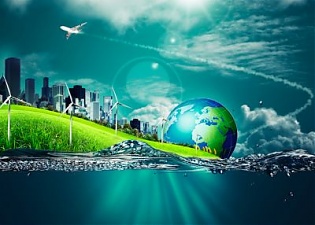Analytics, Economics, EU – Baltic States, Good for Business, Markets and Companies, Modern EU
International Internet Magazine. Baltic States news & analytics
Wednesday, 07.01.2026, 13:39
Circular economy: opportunities for business
 Print version
Print version |
|---|
With the circular economy in mind, the EU member states
and the European Commission are willing to take ambitious measures to cut
resource use, reduce waste and boost recycling. Such new measures will make
Europe’s economy cleaner and more competitive.
Circular economy (CE) is not only for saving our environment and natural resources. It is as well about profit, competition advantages, as well as good opportunities for growth and export. Proceeding along presently dominating “linear economic growth” will reduce EU’s economy by 7% and each household by 11% in 2030. Bottom line: changing old economic paradigm is a must!
In
most EU member states, government advising bodies recommend taking necessary
steps to transform old-aged development models. Conclusions are generally along
the same lines: old production methods, so-called linear approach, which is “rounding”
three aspects: production, consuming and disposing are both devastating for global
and national economies, while reducing huge available potentials in growth and
competition.
CE’s concept and perspectives
Circular
economy, generally, is about saving, sharing and re-using those resources and materials
involved in production in order to economically dispose/re-process so-called
wastes as long and as far as possible. Such approach is definitely good for
environment, but even more for progressive economy with fewer resources
involved.
Experts
say that nature needs 1,5 years to recover what global economy uses during a
year; some countries are using too much ... For example, according to British
think-tank Ellen MacArthur Foundation, if the EU member states follow the
linear economic methods, average European family will lose about 11 per cent of
income by 2030 and EU’s economy will shrink by 7per cent (Politiken, Kroniken Section, 25.06.2017).
Thus,
changing existing development paradigm is a necessity: a modern state shall
re-think the ways it designs, produces and consumes along circular economy (CE)
guidelines. And the sooner countries will do this, the better!
Most
challenging are CEs issues for small countries, like the Baltic States with
educated work force and limited resources. Main perspective is closer
cooperation between public and private sectors along new CE methods and
decisions with new investment opportunities. Certainly, business community and
politicians have to be adequately informed along new “circular way of
life”.
Managing
wastes is becoming a priority: average Danish household produces about 600 kg
of wastes a year; it is much smaller in, e.g. Germany. Worst is that only small
share of wastes is utilized, most is incinerated: less than half of the wastes
is processed or/and managed in Denmark while about 65% in Germany. Total
wastes’ “burden” in Denmark is almost constant at the level of 11 million
tons/year during 2013-15, while household wastes increased from 40 to 46 per
cent; however, about 72% of industrial wastes is additionally used.
Thus,
perspective is clear: non-waste production, as waste is always an important
resource: examples are numerous, from recycling plastic bottles, to re-used
textile wastes for isolation; to re-using old PCs, tablets and smart-phones, to
various sorts of renewables…
Famous
Danish Carlsberg, installed
water-saving system that provides for less water consumption, which is going to
save millions of water yearly…
Hence,
Danish CEs strategy is expected to gain extra €60 billion/year and 13 thousand
additional jobs.
Among
another priorities are: extensive re-use of existing mechanisms and tools, as
well as recycling all waste materials: glass, paper, textile, wood, metal and
scrap… Besides, companies do not pay VAT for using utilized resources!
CEs ambitions
The
Baltic States have to reconsider strategies for public and private sectors’
development up to at least 2030 along the lines of circular economy. CEs
requirements and considerations are the urgent ingredients for both economic
and political directions. Some Baltic Sea area states, like Denmark have
already included into national planning some CE’s aims: increasing resources
efficiency by 40 percent, waste management by 80 percent and reducing residual
wastes by 15 percent. It seems
ambitious, but not impossible, argued Danish government.
These aims could serve as “orientation aims” for other Baltic Sea states.
However, scientific advises are necessary to pave the way to circular economy path; that means the scientific community in the three Baltic States shall be more active in transposing CE’s ideas and practices into national economic development.








 «The Baltic Course» Is Sold and Stays in Business!
«The Baltic Course» Is Sold and Stays in Business!

